
Viscount Hardinge, of Lahore and of Kings Newton in the County of Derby, is a title in the Peerage of the United Kingdom. It was created in 1846 for the soldier and Tory politician Sir Henry Hardinge. His son, the second Viscount, represented Downpatrick in Parliament. His great-great-grandson, the sixth Viscount, succeeded a distant relative as eighth Baronet, of Belle Isle in the County of Fermanagh, in 1986. This title had been created in the Baronetage of the United Kingdom 1801 for Richard Hardinge. He was the third son of Nicolas Hardinge, younger brother of Reverend Henry Hardinge and uncle of the latter's third son Henry Hardinge, 1st Viscount Hardinge. The baronetcy was created with special remainder to the heirs male of Richard Hardinge's father.

The Hobhouse Baronetcy, of Chantry House in the parish of Bradford-on-Avon in the County of Wiltshire and of Westbury College in the County of Gloucester, is a title in the Baronetage of the United Kingdom. It was created on 22 December 1812 for Benjamin Hobhouse, a wealthy brewer and member of parliament for Bletchingley, Grampound and Hendon. His eldest son, the second Baronet, was a prominent writer and Liberal politician and notably served as Chief Secretary for Ireland and as President of the Board of Control. In 1851 he was raised to the peerage as Baron Broughton, of Broughton-de-Gyffard in the County of Wiltshire. However, he had no sons and on his death the barony became extinct, while he was succeeded in the baronetcy by his nephew, the third Baronet. The latter's son, the fourth Baronet, was also a noted Liberal politician and held office as Chancellor of the Duchy of Lancaster and as Postmaster General.

The Eliott Baronetcy, of Stobs in the County of Roxburgh, is a title in the Baronetage of Nova Scotia. It was created on 3 December 1666 for Gilbert Eliott. The second baronet was a member of the pre-union Parliament of Scotland. The third Baronet sat as Member of Parliament for Roxburghshire. The Eliott Baronets share a common early Elliot ancestry with the nearby Earls of Minto (Elliot). It is thought that the surname spelling differences were contrived to differentiate the branches.
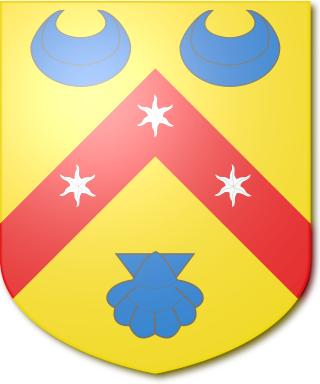
The Henniker Baronetcy, of Newton Hall in the County of Essex, was created in the Baronetage of the United Kingdom on 2 November 1813 for Brydges Henniker, who had earlier represented Kildare Borough in the last Irish Parliament. He was the youngest son of John Henniker, 1st Baron Henniker. The sixth baronet was an admiral in the Royal Navy and sat as Conservative member of parliament for Galloway. The eighth Baronet was a brigadier in the Royal Engineers.
The Langham Baronetcy, of Cottesbrooke in the County of Northampton, is a title in the Baronetage of England. It was created on 7 June 1660 for John Langham, Member of Parliament for the City of London in 1654 and for Southwark in 1660 and 1661. The second Baronet was Member of Parliament for Northamptonshire and Northampton while the third Baronet sat for Northampton. The seventh Baronet was Member of Parliament for Northamptonshire. The tenth Baronet represented St Germans in the House of Commons. The thirteenth Baronet was a photographer, ornithologist and entomologist and served as High Sheriff of County Fermanagh in 1930.

The Blennerhassett Baronetcy of Blennerville in the County of Kerry, is a title in the Baronetage of the United Kingdom. It was created on 22 September 1809 for the Anglo-Irish lawyer Rowland Blennerhassett, He was from a family originally from Cumberland, England, that settled in County Kerry during the reign of James I and represented County Kerry and Tralee in the Irish House of Commons.
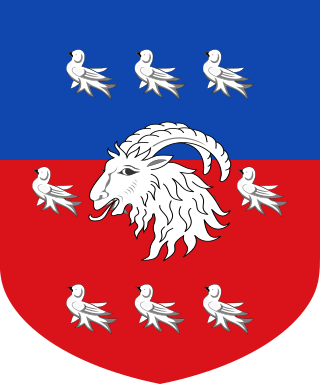
The Boord Baronetcy, of Wakehurst Place in the County of Sussex, is a title in the Baronetage of the United Kingdom. It was created on 18 February 1896 for the Conservative politician Thomas Boord. His eldest son, the second Baronet, died unmarried in 1928 and was succeeded by his nephew, the third Baronet. He was the son of Alexander Edgar Boord, third son of the first Baronet. The third Baronet's eldest son, the fourth Baronet, succeeded in 1975. On his death in 2019, the title passed to his nephew Andrew, an Istanbul-based translator and business development consultant.

The Dorman Baronetcy, of Nunthorpe in the County of York, is a title in the Baronetage of the United Kingdom. It was created on 21 July 1923 for the steel manufacturer Arthur Dorman. He was the founder and chairman of Dorman Long & Co, of Middlesbrough.

The McFarland Baronetcy, of Aberfoyle in the County of Londonderry, is a title in the Baronetage of the United Kingdom. It was created on 23 January 1914 for the Irish businessman John McFarland. He was founder of and a partner in the firm of McCrea and McFarland, engineering contractors, of Belfast and Derry, Chairman of Mulhollands, drapers, and owner of the Lough Swilly Steamship Company, and also served as Mayor of Londonderry. He was succeeded by his son, the second Baronet. He was a businessman, a Senator of Northern Ireland, Mayor of Londonderry, Lord Lieutenant of the City of Londonderry and an Irish Rugby union international. The third Baronet was a member of the Londonderry Corporation and a Deputy Lieutenant of the City of the County of Londonderry from 1956 to 1982.

The Wiggin Baronetcy, of Metchley Grange in Harborne in the County of Stafford and of Garth Gwynion in Machynlleth in the County of Montgomery, is a title in the Baronetage of the United Kingdom. It was created on 17 June 1892 for Henry Wiggin. He was the founder of Henry Wiggin and Co Ltd, manufacturers of specialty metal products, and also represented Staffordshire East and Handsworth in the House of Commons. The second Baronet was High Sheriff of Staffordshire in 1896. The third Baronet was a colonel in the army and served as High Sheriff of Warwickshire in 1942. The fourth Baronet was high sheriff of Warwickshire from 1975 to 1976 and a deputy lieutenant of the county in 1985.
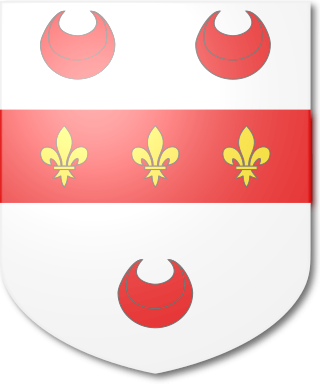
The Oakeley Baronetcy, of Shrewsbury, is a title in the Baronetage of Great Britain. It was created on 5 June 1790 for the Indian administrator Charles Oakeley. He served as Governor of Madras from 1790 to 1794. Frederick Oakeley was the second son of the first Baronet.

The Leeds Baronetcy, of Croxton Park in the County of Cambridge, is a title in the Baronetage of the United Kingdom. It was created on 31 December 1812 for George Leeds. He was an equerry to Prince Augustus Frederick, Duke of Sussex. The Croxton Park estate in Cambridgeshire had been in the Leeds family since circa 1568. As of 2011 the presumed ninth and present Baronet, a resident of Canada, has not successfully proven his succession and is not on the Official Roll of the Baronetage.

The Hervey-Bathurst baronetcy, of Lainston in the County of Southampton, is a title in the Baronetage of the United Kingdom. It was created on 7 December 1818 for Felton Hervey-Bathurst, with remainder, failing heirs male of his own, to the heirs male of his father. Hervey-Bathurst was the grandson of the Hon. Felton Hervey, seventh son of John Hervey, 1st Earl of Bristol, and served as an Aide-de-Camp to the Duke of Wellington after the Battle of Waterloo.
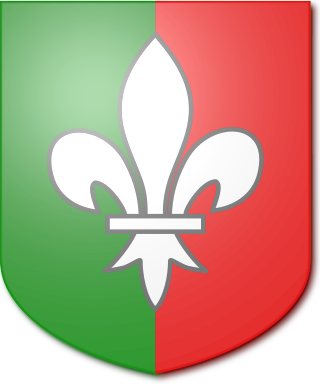
The ffolkes Baronetcy, of Hillington in the County of Norfolk, is a title in the Baronetage of Great Britain. It was created on 26 May 1774 for Martin ffolkes, FRS later High Sheriff of Norfolk and Member of Parliament for King's Lynn. The second Baronet represented Norfolk and Norfolk West in the House of Commons while the third Baronet represented King's Lynn. The fifth Baronet was Honorary Chaplain to Queen Victoria, Chaplain-in-Ordinary to Edward VII and George V and Chaplain to Edward VIII and George VI.

The Milman Baronetcy, of Levaton-in-Woodland in the County of Devon, is a title in the Baronetage of Great Britain. It was created on 28 November 1800 for Francis Milman, Physician-in-Ordinary to King George III and President of the Royal College of Physicians. The seventh Baronet was a brigadier-general in the British Army.

The Russell baronetcy, of Swallowfield in the County of Berkshire, was created in the Baronetage of the United Kingdom on 10 December 1812 for Henry Russell. He was Chief Justice of Bengal and was admitted to the Privy Council in 1816. The 3rd Baronet represented Berkshire and Westminster in the House of Commons as a Conservative and was also awarded the Victoria Cross. The 4th Baronet sat as a Conservative Member of Parliament for East Berkshire. The 6th Baronet was a noted mineralogist.
The Johnson baronetcy, of Bath, Somerset was created in the Baronetage of the United Kingdom on 1 December 1818 for Henry Johnson, a colonel in the 5th Regiment of Foot and Governor of Ross Castle. He was the younger brother of Sir John Johnson-Walsh, 1st Baronet, of Ballykilcavan.

The Forbes baronetcy, of Craigievar in the County of Aberdeen, was created in the Baronetage of Nova Scotia on 20 April 1630 for William Forbes, son of the merchant William Forbes who built Craigievar Castle. He was also a descendant of Hon. Patrick Forbes, third son of the 2nd Lord Forbes, and the nephew of the 1st Baronet of the 1628 creation.
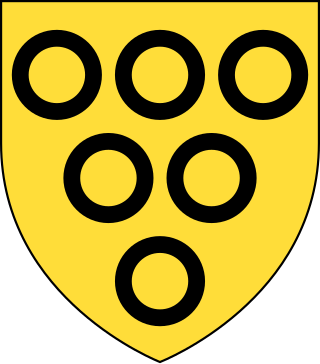
The Lowther baronetcy, of Swillington in the County of York, was created in the Baronetage of the United Kingdom on 3 November 1824 for John Lowther. He was the second son of Sir William Lowther, 1st Baronet, of Little Preston, and brother of William Lowther, 1st Earl of Lonsdale (1807). His seat was Wilton Castle.

The Lawson baronetcy, of Brayton in the County of Cumberland, was created in the Baronetage of the United Kingdom on 30 September 1831 for Wilfrid Lawson. Born Wilfrid Wybergh, he was the son of Thomas Wybergh by the sister of the 10th Baronet of the 1688 creation. He assumed by Royal licence the surname of Lawson in lieu of Wybergh.


















